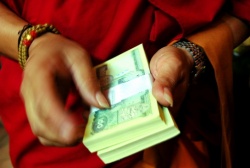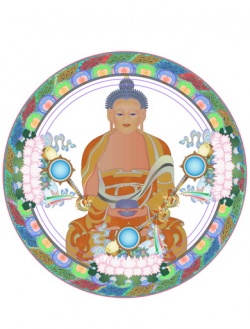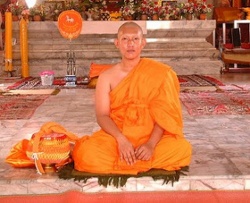Difference between revisions of "Twenty-five principles"
Jump to navigation
Jump to search
| Line 1: | Line 1: | ||
| − | {{ | + | {{DisplayImages|2139|301|2333}} |
'''[[Twenty-five principles]]''' (Wyl. ''[[shes bya nyer lnga]]'') — categories into which the followers of the non-Buddhist [[Samkhya]] school divide all [[phenomena]]. | '''[[Twenty-five principles]]''' (Wyl. ''[[shes bya nyer lnga]]'') — categories into which the followers of the non-Buddhist [[Samkhya]] school divide all [[phenomena]]. | ||
| Line 48: | Line 48: | ||
[[Category:Samkhya]] | [[Category:Samkhya]] | ||
| + | {{BuddhismbyNumber}} | ||
Latest revision as of 18:18, 23 April 2014
Twenty-five principles (Wyl. shes bya nyer lnga) — categories into which the followers of the non-Buddhist Samkhya school divide all phenomena.
- self (Wyl. bdag; Skt. purusha)
- most subtle potentiality (Wyl. gtso bo; Skt. prakriti)
- pure potentiality (Wyl. chen po; Skt. mahat)
- ego/I-principle (Wyl. nga rgyal; Skt. ahamkara)


